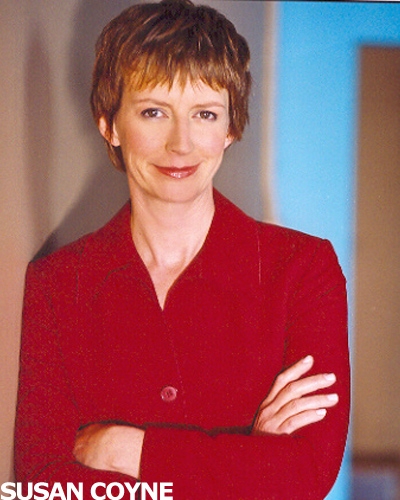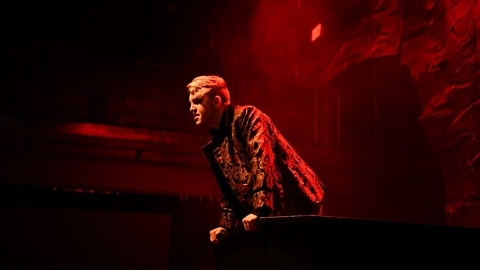Hello theatre creators, educators, scholars and everything in between! I hope you’re having a productive-yet-restful summer. Ever wonder what it’s like...
Down in The Valley
30 January 2014: At the end of their embedding, and having read some of their classmates’ review responses to the production, the five students following the process of The Valley reflected on their experiences. Here are excerpts from what they wrote:
Anthony Kuchar writes: In all the years I’ve been working and studying in theatre, this has probably been one of my favourite experiences. I got to meet actors and directors working in the field. I’ve met professionals before, but not in such “legitimate theatre” surroundings. This was a chance to see professionals tackling serious subject matter.
I was very impressed by the final production. To me, it was everything I had imagined it was going to be. I felt such pride in the actors, director and technicians. When I read the reviews by my peers that we workshopped in class, I was relieved to find that most of them had enjoyed the show. Much of their positive comments had to do with the relevance of the show’s subject matter. The positive reviews (and even those that were more negative) all agreed that the show was dealing with a real social problem. This is a win for Joan MacLeod. My only real disappointment afterwards in class was that we didn’t have more time as a class to talk about the subject matter of the play. I was quite curious about the reaction the reviewers had to this aspect of the play, considering how close to home it is to us as university students. But since this is a class about writing play reviews, I understand that that has to come first.
One of my peers had some questions about the production sometimes feeling over-dramatic; another felt the best part of the how was the first half and that the second half dragged in comparison (I happen to disagree). I’m happy to see that there are some people who had contrarian opinions. Although I can debate their points, I’m glad I read them. It’s made me think, and challenges my own assumptions. It could be entirely possible (considering my vantage point) that I could be completely deluded about this show’s quality. My closeness to this show, at once my greatest ally, could also be my enemy.
Cassandra Moerman writes: As soon as we sat in at the first read-through, I was knew this was going to be an extraordinary experience. I grew more and more excited as time went on because to me, the direction they took the show was what theatre is all about: creating something beautiful, while also inviting the audience to think critically and take a point of view on the play’s content.
Being embedded in the production made me feel a closer connection with the text than from that of a spectator standpoint. I could appreciate a lot more of the artistic choices that were made, the technical aspects, and the subtleties, because I was not completely consumed by the emotion of the play. I think embedding is the best way to critique a piece of theatre now because I was able to know more about production (not just the play) and delve deeper into the meaning behind the choices.
It was kind of strange to read the class’s response to The Valley because I feel a connection with the production. That’s why I’m glad most of the class seemed to enjoy it so much and that the overall impression was positive. It was hard to know in advance if the class would embrace something that hits so close to home or reject it completely. The entire class did not agree that it was a perfect performance, but I do not think it needs to be. Even the negative aspects that were brought up by my classmates prove that they were thinking about the play: they did not shut off or ignore it; they were active in watching it. The point of the play (from my perspective) is to make people think and I believe the play did just that.
As much as I feel privileged to have the opportunity to be embedded in The Valley, I wish we had been able to see an earlier rehearsal. Jumping from the read-through to an almost-performance-ready dress rehearsal was interesting, but I would have liked the chance to see the actors work through their characterization and blocking. By seeing something completely different like that would have added another layer to our experience.
Dani De Frenza writes: When we went to see the production with our classmates, I purposely chose to sit on the opposite side than I had during the dress rehearsal only a week before. I was curious to see if certain moments, like the scene where the troubled young mother Janie considers suicide by stepping in front of a train, would be as effective if viewed from a different perspective. As the moment grew closer, I prepared myself, analyzing every second. The bright spot light set on the far back wall grew, inching closer but instead of blinding the audience like it did when I watched it from the opposing side of the stage, the light closed in, framing the actress’ face and with a sudden screech the lights turned to black and I listened as the audience around me caught their breath whilst wiping their tears. Obviously it did not matter from which side the show was watched; director Richard Rose and lighting designer Graeme S. Thomson made every angle equally powerful.
Throughout the process I was happy to have a few talkbacks with the Tarragon’s director of education and outreach, Erin Brubacher, who was guiding us through our embedding experience. While these talkbacks were short and there were numerous people there in addition to the five of us, we gained quite a bit of new and insider information.
The experience itself of being embedded within The Valley was exciting, constantly feeling a part of the process when in actuality we were only there to observe. For some, the idea of walking into a theatre is daunting, and to watch the same show twice may seem like torture, but Tarragon’s The Valley is a show I would have been more than willing to experience again and again because it never failed to impress.
Casey Laidlaw writes: The first read-through was an experience like no other for me. As an actor, it was so interesting to see what a first day on a professional production may look like. As a critic, I could clearly see some of the issues director Richard Rose would be facing in the staging of this play. I really felt like I was going to be a part of this show, and I felt important.
The dress rehearsal was a part of the experience that opened my eyes to many aspects of theatre. It was so interesting to see the crew working around me to attempt to put on a show as if it were a paid performance before an audience. The different challenges they faced at that point, and the changes they made in the performance we saw with the whole class were intriguing, and I really wish we had had an opportunity to ask about some of them. For example, in the dress rehearsal, there was a voice-over when the character of Connor got high that I thought really added to the mood of the scene. I was curious why this was removed.
The majority of the class really loved the play and felt like it was relevant and important. In their reviews, my peers made comments were about the restraint and precision of the director’s choices, and the truthfulness of the acting. These are aspects I had hoped the audience would pick up on. The playwright, director, actors and entire creative and technical teams really did a wonderful job in bringing such an important topic to light.
21 November 2013: Here is a sampling of DARTcritics’ reviews, of the 12th November preview performance, of Tarragon Theatre’s production of The Valley.
Jesse Heichert writes: Staring down at the glowing circle in the centre of the room, the only sound that was heard was our own shuddering breaths – we cried for the boy who lay in that circle, cried for the boy trapped by his demons, the boy imprisoned by his own pain. The Valley, written by Joan MacLeod and directed by Richard Rose, is a soul-wrenchingly honest look at mental illness and the devastating impact it can have.
The Valley focuses on two different stories about mental illness. The main story is that of a mother and son. Susan Coyne delivers a stunning performance as Sharon, whose desperate need to help her son Connor (Colin Mercier) is powerful and unrelenting. The other story is that of the young police officer Dan (Ian Lake), and his wife Janie (Michelle Monteith) – a woman struggling to cope with new motherhood. Through this couple we are offered a glimpse into the difficulties around law enforcement in Vancouver, a city torn through with privation and crime. We learn about the hardships that come with being both a mother and the partner of a man who risks his safety to protect others without really seeing those who need him most.
I was blown away by this production. The themes are hugely difficult, and the authenticity and depth of both the play’s writing and the actors’ performances are what makes it so riveting. It is fascinating the way the mother and police officer represent two conflicting perceptions of and reactions to mental illness. Mercer gives an extremely compelling performance as Connor, presenting the complexities of mental illness in a way that is both provocative and emotionally intense. It is because we can relate to all the characters in some way – because we can understand their pain – that the show is so powerful.
I would recommend The Valley to anyone. It is a beautiful interpretation and exploration of the hardships of mental illness, and the strength we all possess to stand up and believe in our own happiness.
Brianne Lidstone writes: Alienation, intrigue, and curiosity are only some of the sensations the audience experiences at Tarragon Theatre’s production of The Valley as they walk through the scattered set pieces to find their seats. From this vantage point, it is impossible to escape being cast a role in the telling of this gripping tale (which we saw at its final preview performance).
Director Richard Rose effectively explores this story of mental illness and law enforcement, weaving it into a reality where two separate families intertwine. The Valley digs its teeth into the many shapes and forms of mental illness, and as playwright Joan MacLeod explains in a programme note, it explores the idea of what “protection” really means. Does our law enforcement understand how to handle mental illness? Are the police insensitive to “criminals” who show clear signs of derangement? The audience is left to judge as each character pleads their case.
The play opens with a direct address from Connor, an awkward teen played by Colin Mercer, as he remembers his first encounter with the police. It is a light, amusing opener for a production that does not tiptoe around the challenging issues it presents. It also plays a crucial role in easing the audience into the heavier content of the play.
The cast is top notch: Mercer portrays Connor with a sense of danger and charm, cleverly playing on the precipice of depression and darkness. Colin’s mother Sharon, played by Susan Coyne, is crafted from an intriguing mixture of tension and anger, while delving into sympathy and compassion.
Graeme S. Thomson’s fluid set design creates a solid foundation for transitioning between scenes with no set changes. Transforming effortlessly from a train station platform to a jail cell and more, the tiled circle centre stage acts as a threshold between the events that happen in real time and those that occur in the two separate worlds of the play. As the worlds become more and more entwined, the more they gravitate toward this transitional space.
Whether it’s the post-partum depression of a police officer’s wife or a college student’s struggles, the audience is caught in the middle of this journey of despair, grief, and eventual healing. The taboo around depression is dismantled with precision and clarity, piercing it through the heart and ripping it wide open for all to see. The audience is ultimately left with a clear message: mental illness affects everyone.
Gina Greco writes: Life is full of struggle. Struggling to find your classes on the first day of university. Struggling to maintain a relationship. Struggling to pull yourself out of bed on a chilly winter morning. Struggling to beat addiction and depression. The Valley by Joan MacLeod is all about such struggles, focusing on the lives of two Vancouver families who are brought together through a search for answers to questions that are destroying them.
Entering the performance space on the final preview evening, the audience was invited to walk directly through the set: a simple bedroom, kitchen, living and office space that seemed like that of any middle class family. Taking seats on either side of the stage left the audience with two unique perspectives, and under the expert direction of Richard Rose, there was nothing lost in the actors playing to both sides respectively. The most unique aspect of this setup, however, was the clever positioning of the actors, who entering the stage from within the audience. It made us feel like they could have been anyone, allowing the audience to easily relate from the get-go. It was only when one of the actors stepped onto the stage with clear intent that we realised he wasn’t just another spectator.
It is through the character of Connor (Colin Mercer) that we are pulled headfirst into MacLeod’s world. A young adult struggling with a crippling depression, Connor copes with his demons by writing a novel Vassalon and the Valley of the Clouds, an expertly written metaphor for Connor’s struggle on MacLeod’s part. An altercation with the police leads Connor to meet police officer Dan (Ian Lake), a new father, and Janie (Michelle Monteith, his wife and a recovering addict. It is through this chance meeting of strangers that more than one life is saved.
The Valley is engaging and heart-wrenching, and there was not a moment where the audience couldn’t relate in some way to Connor, his mother, Dan, or Janie. The realism of the story and action made The Valley undeniably powerful: a bare and heartbreaking view of mental illness. The only unfortunate aspect was that several of The Valley‘s core audiences – these being students and young adults who might be going through the same things as Connor – were hardly present on the night we attended, beyond our own group of university students. The play’s message is in danger of being lost to people who might need to know that they can surmount of the valley of their depression and climb past it.
5 November 2013:
We found ourselves in an unfamiliar theatre atmosphere, feeling as if transported into the lives of the characters of The Valley as we walked into the Main Space of Tarragon yet again. The audience is seated on the stage itself, close enough to make us anxious and as if we were a contribution to the action of the play. There was an incredibly intimate feel, as we were viewing these characters’ lives; we were guests looking in on their problems and difficulties with no filters, no boundaries.
We had the privilege of seeing the read-through in early October, which made us excited to see how Richard Rose and his company would stage such a great script. While we did not have specific expectations about aesthetics, we were impressed to see how the staging enhanced the text. We were able to witness how both families slowly merged together as they shared their stories, as well as the set and props.
Being able to see the transition from the actors’ read-through to their actual performance was rewarding. Every action performed and every word spoken was incredibly natural, so that we really felt like we were flies on the wall of their lives. Believability is a key factor in portraying the play’s message, so the naturalistic feeling that the actors communicated was essential and well executed.
A major motif throughout the production is the use of an Aboriginal Healing Circle. The entire floor is carpeted except for a single hard-surfaced circle in the middle of the stage. It is a visual aspect that allowed the actors to connect the characters’ stories together, as well as communicate them to the audience. Aspects of Aboriginal culture are interwoven throughout the production. We hear the sound of traditional drums, and the lighting is used to create four shadows when the actors stand in the middle of the circle, representing the four sides of the Healing Circle.
When the play reached intermission, Connor (played by Colin Mercer) was sitting in the middle of the circle, and did not leave the stage: he stayed there for the entire duration of the intermission. It forced the audience to walk around his trapped character – as people avoid confronting mental illness in everyday life – in order to get out into the lobby.
Intermission was also the first time that we were able to step outside of the performance and see it as an actual dress rehearsal. As the crew walked around setting up for the next act, Mercer broke character momentarily to get someone to take a picture of his appearance to ensure everything was as it should be. We watched as the crew took pictures of the set and make notes for future reference. Other than these small elements, the entire performance was treated as if it were an actual performance night.
The Valley has many different aspects and offers different viewpoints on mental illness, which allows the audience to connect to the play. Whether you may have experienced these daunting things personally, or helped someone who has gone through them, the play reaches out with its messages. There is nothing hidden or confusing in the script. The real impact comes from experiencing the production, connecting with the play as it is being performed.
We found out at the end of the evening that the intermission might be cut. We are curious to see what happens about that, and how it affects the production. We will find out soon enough! We are seeing the show this week, along with the rest of our classmates. They will be reviewing the production, and we will be responding to their reviews.
7 October 2013: Even though the rain trickled down the outside walls of Toronto’s Tarragon Theatre, nothing could possibly wash away our enthusiasm as we walked through its doors. Joan MacLeod’s new play The Valley was about to have its first read-through with its full cast and crew in the Tarragon. Attending this important event was the first part of our experience of being embedded in this creative process. The Valley, set in Vancouver, shines a light on mental illness, and the potential for growth and healing while dealing with its hardships. MacLeod has a strong relationship with Tarragon Theatre, which first staged one of her plays as long ago as 1987; this play had its world premiere earlier this year at Alberta Theatre Projects in Calgary.
We were led like VIPs through the back stairs to a small, quaint room filled with actors, designers, producers, and auditors of the production, as well as the playwright herself. Director Richard Rose (who is also the Tarragon’s artistic director) welcomed us warmly and told us it was “a day of firsts,” comparing it to the first day of school, which involves vulnerability, imperfections, and everyone being open to new ideas. After going around the room for some brief introductions (and some good-natured teasing about how we are in a “theatre critics’ class”), we were acquainted with the company and were ready to begin.
Before the read-through, Rose, set designer Graeme Thomson, and costume designer Charlotte Dean made sure the actors and everyone else could visualize the stage, costumes, and desired atmosphere for the production. Thomson displayed a maquette and discussed the reasoning behind the design decisions. The set is beautiful and simple; there will be no set changes, so each aspect of the set had to be very deliberately chosen. We also listened as Dean described her costuming choices, showing sketches including colours and the brands that she intends to associate with each character. The play is set in the present day, so a lot of the costumes, such as Ugg boots and hoodies, will seem like they came out of someone’s real-life closet. Actors frequently asked questions and made comments, in order to further understand their characters’ personalities. We all had a picture of the play in our minds before we heard the first line.
We settled into our seats once again, the circle quieting in anticipation as the actors opened their scripts. The play revolves around Connor (Colin Mercer), a teenager who goes away to university and gets caught up in a deepening depression. Dan (Ian Lake) is a tough police officer who ignores his wife Janie (Michelle Monteith)’s post-partum depression in favour of his newborn son and the picture-perfect family he has created in his head. When Connor and Dan’s paths cross and violence ensues, Connor’s mother Sharon (Susan Coyne) tries her best to show everyone how innocent her son is, while trying to help him get better.
As we heard Connor’s first monologue, we were swept away into the world of the play. We were swallowed up by the character’s intensity and the rollercoaster of emotion that accompanies the hard-hitting subject matter of mental illness and police brutality. However, as the play progressed, we realized that what Rose had said before was true: The Valley is not only a play about depression; it holds the possibility of healing and growth. It is a touching story involving many struggles, but also hope and positivity, which the actors brought to life spectacularly. All four actors had confidence and a naturalistic approach that not only helped keep us engulfed in the story, but also helped with establishing relationships between the characters. Even though it was only a read-though, our attention did not divert for a second. Already, the actors are embodying their characters and weaving emotional stakes through their words.
We cannot wait to see how such an electrifying read-through will develop into a fully staged production!
–Alicia Bisante, Dani De Frenza, Anthony Kuchar, Casey Laidlaw, Cassandra Moerman
Related Posts
For nearly two years, theatre lovers have felt entrapped in their own little purgatories. Artists have been unable to perform on stages, and audiences been...
Frances Johnson graduated from the Department of Dramatic Arts in 2020 and was about to begin an internship at the Shaw Festival when the Covid-19 pandemic...
For nearly two years, theatre lovers have felt entrapped in their own little purgatories. Artists have been unable to perform on stages, and audiences been...
Frances Johnson graduated from the Department of Dramatic Arts in 2020 and was about to begin an internship at the Shaw Festival when the Covid-19 pandemic...
Leave a Reply (Cancel Reply)
Twitter Feed
Blogroll
DARTcritics.com is partially funded by the Marilyn I. Walker School of Fine and Performing Arts, in support of student learning; experiential education; student professionalization; public engagement with the teaching, learning and production activities of the Department of Dramatic Arts; new ways of thinking; and the nurturing of links with our communities.












